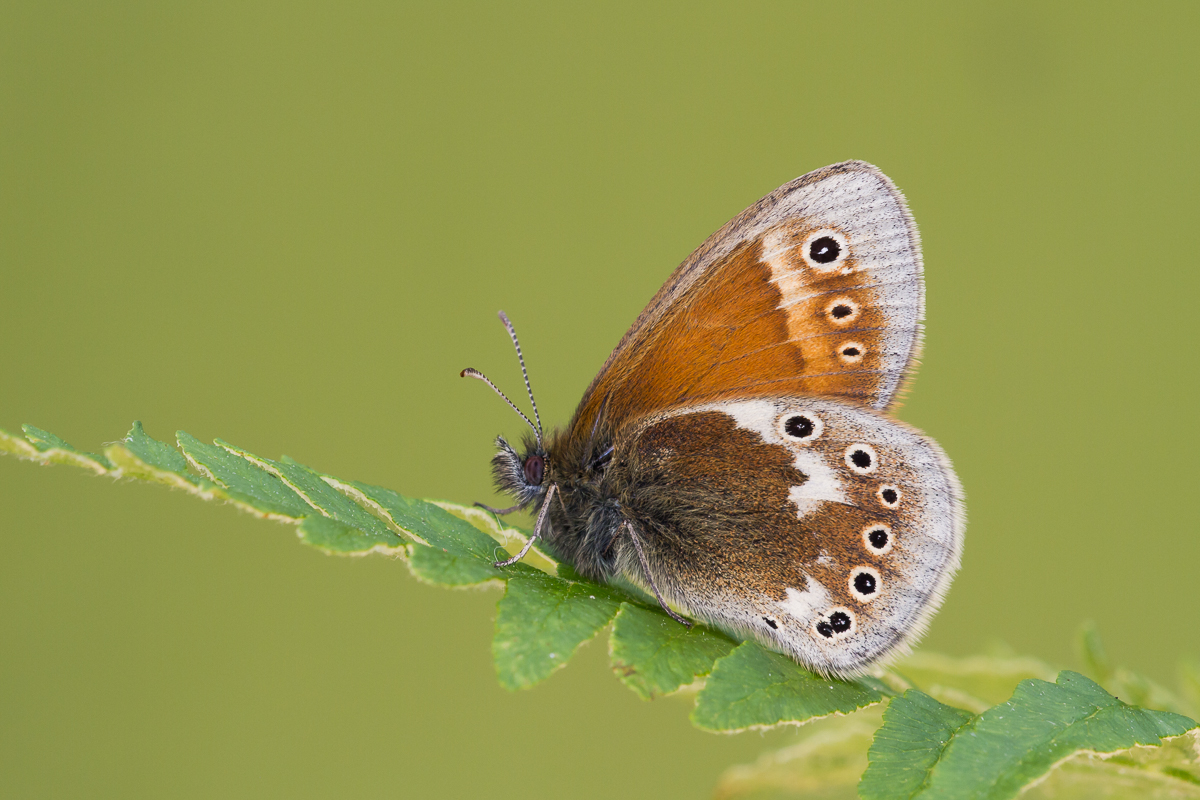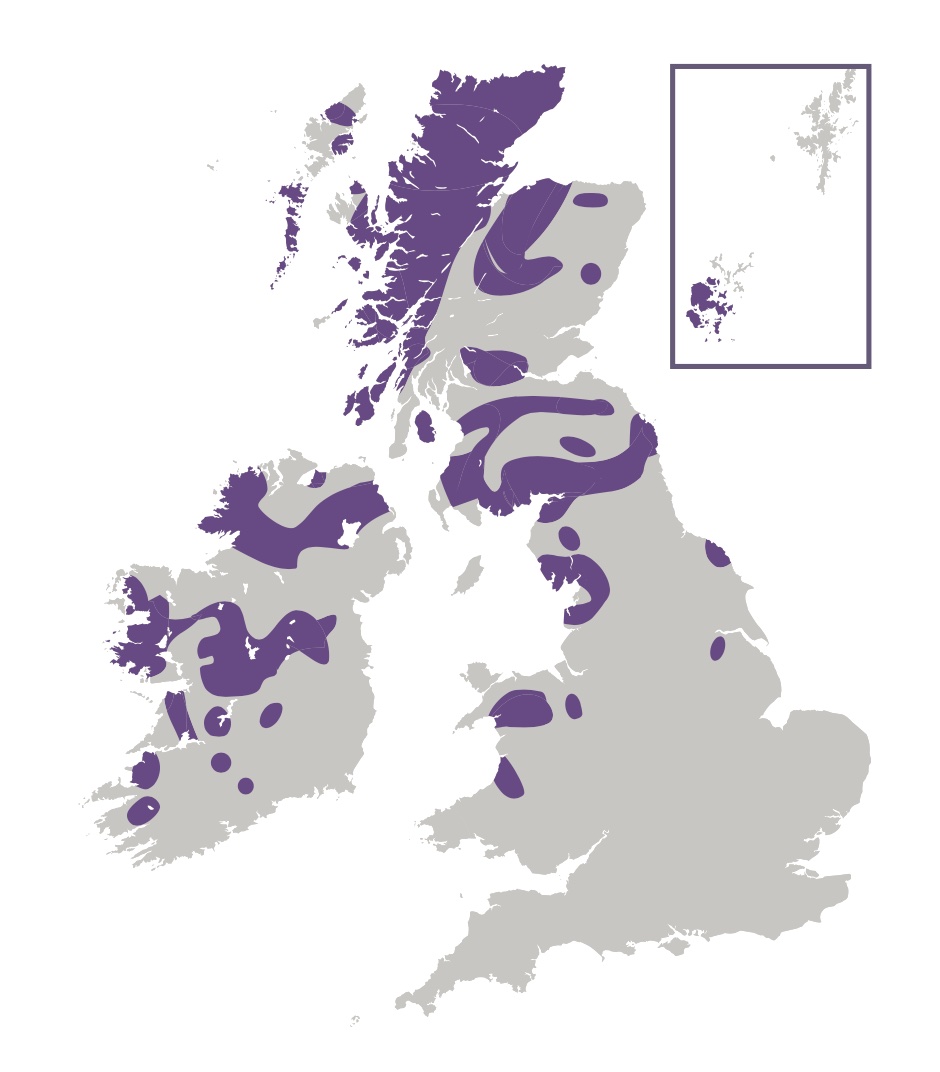
Photo © Peter Eeles
Found in the north of the British Isles, the Large Heath is unique in that it is more or less confined to boggy areas. The Large Heath lives on the British mainland in isolated colonies from central Wales in the south to Orkney in the north, and also in scattered colonies throughout Ireland. It is absent from Shetland. The best colonies can be very large in good years, where the number of adults emerging is measured in thousands. Large colonies used to exist in the mosses around Manchester and Liverpool, but these have long since disappeared.
The eye spots on the underside of this species vary considerably. Those in the north have almost no spots at all with adults looking like a large Small Heath, while those in the south have very distinctive spots. This has given rise to 3 named subspecies. Those with the least distinct spots are referred to as ssp. scotica, those with the most distinct spots as ssp. davus and those that are intermediate as ssp. polydama. This species forms a typical cline and, unsurprisingly, intermediates occur between the 3 named subspecies. For example, Ford (1945) writes: "It appears that in the island of Islay scotica predominates, but that the intermediate sub-species tullia [= polydama] is not uncommon and that even specimens closely approaching philoxenus [= davus] occur".
Ford (1945) also describes the situation in Ireland: "The sub-species philoxenus [= davus] does not occur, but scotica and tullia [= polydama], with their intermediates, fly together in the same location". Nash (2012) concurs with Ford (1945) that both scotica and polydama are found in Ireland. Riley (2007), however, suggests that only polydama is found in Ireland, although no explanation is given for this position.
Brakefield (1992) describes, in detail, the reason for this variation, which is believed to be natural selection based on predation by birds. The cooler climate in the north, along with fewer hours of daylight, results in less-active adults whose plain undersides make them difficult to find while at rest. Adults further south, on the other hand, are much more active and are more-likely to attract the attention of birds as a result. In this case, the distinct eye spots deflect the bird's attention away from the body.
Despite its slow and lumbering flight, the butterfly can be difficult to follow due to the boggy ground underfoot. Furthermore, when disturbed, the butterfly will launch itself into the air, often flying some distance before landing again. All in all, this is not always the easiest species to see, let alone photograph!
The adults remain somewhat active even in dull weather, but will remain tucked away in vegetation in strong winds and cold weather. Males are more-often seen than females, which tend to stay hidden away in grass tussocks unless nectaring or egg laying. Adults always rest with their wings closed and regulate their temperature by orientating their wings at an appropriate angle to the sun. Both sexes take nectar, Cross-leaved Heath being a particular favourite that often grows alongside the food plant.

This butterfly is found in flat wetland areas such as bogs, waterlogged peat mosses and damp moorland where the foodplant, normally Hare's-tail Cottongrass, and appropriate nectar sources are also found. Sites are often clothed in Heather.
Adults feed primarily on Cross-leaved Heath (Erica tetralix). hawkweeds (Hieracium spp.), heathers (Calluna and Erica spp.), Tormentil (Potentilla erecta) and White Clover (Trifolium repens) are also used.
The primary larval foodplant is Hare's-tail Cottongrass (Eriophorum vaginatum). Common Cottongrass (Eriophorum angustifolium) and Jointed Rush (Juncus articulatus) are also used.
